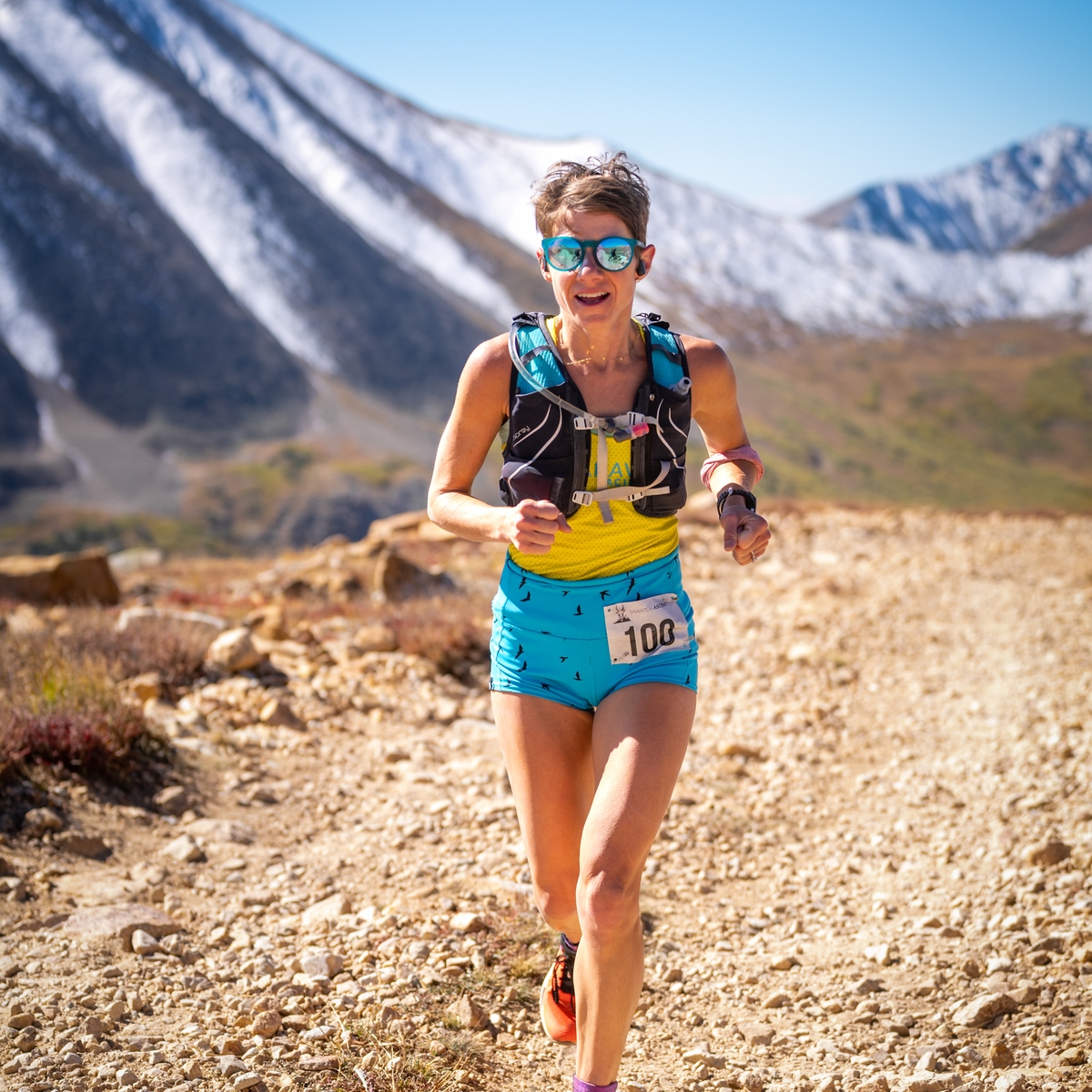
Lauren Puretz
Western States® 100-Mile Endurance Run
Lauren's headline numbers
Lauren's strategy
Fueling
Carbohydrate is the main fuel you burn when racing. Failing to fuel properly is a leading cause of underperformance in longer races.
Having previously struggled with fueling consistently during races and longer training sessions, Lauren has been working with the PF&H Sports Science Team to dial in her strategy and has been able to average above 90g/h of carb across shorter duration races up to ~5 hours, as seen when she finished 3rd at The Gorge 50k. With a plan in place and the support of her crew, Lauren started off strongly and consumed her target of ~90g/h for over half of the race by using a combination of PF Carb & Electrolyte Drink Mix, PF Carb Only Drink Mix and PF 30 Gels. Unfortunately, she started to feel quite uncomfortable in her stomach, experiencing some unwanted GI issues which hampered her intake until the finish. Tash, from the PF&H Sports Science Team, was at several of the crew stations on course to give Lauren hands-on nutrition guidance and help her continue to take on some fuel even when things got tough. She opted for some cola and other energy drinks at aid stations to avoid flavour fatigue, whilst also being easier to get down and still supporting her energy needs. Despite rigorous gut training in the weeks leading up to the event, we would encourage Lauren to continue practising her goal fuel intake in training, particularly sessions which replicate those of her planned races, and where possible, in similar temperatures.
Hydration
Taking on board an appropriate amount of fluid and sodium is essential to maintaining blood volume and supporting the cardiovascular effort needed to perform on race day.
Whilst the absolute amount of sodium and fluid consumed per hour is important, it’s critical to consider these in relation to each other. This is known as 'relative sodium concentration' and it’s expressed in milligrams per litre (mg/L). How much sodium you’re taking in per litre of fluid is more important than the absolute amount taken in per hour.
Sweat sodium concentration (mg/L) is largely genetically determined and remains relatively stable. Knowing how salty your sweat is enables you to replace a good proportion of your sweat losses, which can range from 200-2,000mg/L.
Whilst Lauren’s losses are on the moderate side, getting her hydration strategy right is still crucial when it’s hot and/or humid as her higher sweat rate in these conditions can result in significant net losses over the duration of a race.
Learn moreLauren has completed some sweat rate testing during a variety of her training runs in the lead-up to Western States to refine her hydration strategy and ensure she replaces enough fluid to limit the risk of dehydration. With the race occuring in hotter conditions than she was used to, Lauren focused on drinking as often as she could from the fluid reservoir in her hydration pack and Soft Flasks in the front of her pack. She relied on PF Carb & Electrolyte Drink Mix, PH 1000 (Tablets) and a few Electrolyte Capsules to replace some of her sweat sodium losses during the race. Lauren’s hydration strategy was designed to replace ~1,000 milligrams of sodium per litre she consumed, but she reported feeling that her drinks tasted too salty. As a result, she swapped some of her soft flasks of PH 1000 for some with plain water to reduce her perception of saltiness. With a bit more time to prepare for her next ultra race, Lauren is going to focus on practising her fluid intake in hotter conditions to help her tolerate the volume and concentration of her drinks.
Caffeine
Beyond the Three Levers of Performance (carb, sodium and fluid), caffeine is one of only a few substances that is proven to improve performance for most endurance athletes as it can help stave off mental and physical fatigue.
Relative to her bodyweight, Lauren’s caffeine consumption tipped her slightly above the scientifically recommended intake for a race of this length and intensity, but would most certainly have given her the ergogenic benefits available to support her performance. Lauren pre-caffeinated ahead of the race with a coffee in the morning and a PF 30 Caffeine Gel just over 30 mins before the race started. Given she experienced some GI issues as the race developed, Lauren sensibly swapped a couple of her planned PF 30 Caffeine Gels for PF 30 Gels that she found easier to tolerate.
How Lauren hit her numbers
Here's everything that Lauren ate and drank on the day...
Lauren's weapons of choice
Final thoughts
Lauren's full stats
Data Confidence?
There is good confidence in the accuracy of the data reported. An athlete feels that the numbers closely reflect what they consumed despite a couple of estimations which may carry some degree of error. The majority of what was consumed is recorded to a high level of specificity (most volumes are known through the use of bottles brands quantities flavours). The numbers are very plausible and align with previous data recordings (if an athlete has collected data previously).